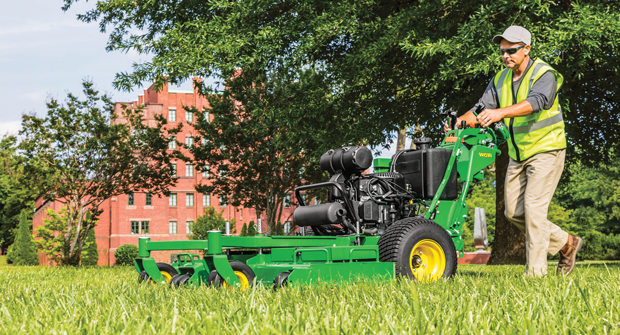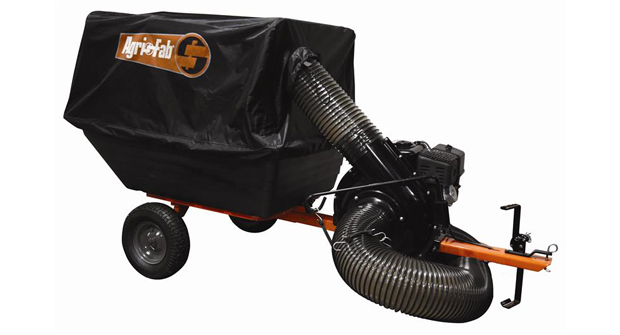While zero-turn mowers reign supreme for sprawling landscapes, relegating the walk-behind mower to the sidelines would be a mistake.
Here are three key reasons why this unsung hero deserves a permanent spot on your landscape maintenance trailer.
Versatility
Simply put, walk-behind mowers are the workhorses of professional landscaping, conquering challenges that zero-turn mowers can’t handle, says Ron Scheffler, senior product manager at Bobcat Co.
“There’s still a necessity for (walk-behind) mowers because they’re used on medians and to cut the highly landscaped areas around flowerbeds where you need more control and to fit into tighter spaces, which their smaller decks allow for,” he says. “These smaller deck sizes get a landscaper in and out of yards and landscapes that are more difficult for zero-turns to maneuver into.”
Walk-behind mowers are ideal for steeper slopes and hillsides, which can prove challenging to larger, sit-down units, says Maureen McCormack, commercial mowing market manager at John Deere.
Beyond maneuverability, walk-behind mowers offer surprising versatility in deck size. McCormack highlights that professional-grade models can range from 32 inches to a substantial 54 inches, with John Deere planning an even larger 72-inch deck for the near future.
Adaptability is another key advantage. With the addition of a sulky, walk-behind mowers transcend their push or self-propelled limitations. This attachment transforms them into stand-on riding mowers, retaining the core advantages of unmatched maneuverability, superior stability on inclines and a tighter turning radius.
Beyond individual performance, walk-behind mowers offer logistical advantages for landscaping companies.
“A walk-behind’s smaller size allows you to get more (mower) units on a trailer,” Scheffler says. “Now, there’s less overhead to manage. So, from a value proposition, walk-behind mowers still have a valid place in the industry and will continue to be so.”
Attractive entry point
If you’re a contractor entering the landscape maintenance business, a commercial-grade walk-behind mower offers a more affordable price point.
“If you’re talking purely commercial-grade mowers, the cost difference between walk-behind and sit-down mowers is going to be between $3,000 and $4,000,” Scheffler says.
For the fledgling turf maintenance contractor, a commercial walk-behind provides a lot of value for the money.
“If you’re new and trying to get established, a smaller, walk-behind unit is going to prove a good quality cut,” Scheffler says. “You’re forced to (mow) at a slower pace, which allows the grass to get up to the blades and gives a cleaner quality of cut, which helps build credibility when you’re first starting out.”
Continued evolution
The walk-behind mower is not a stagnant technology, and manufacturers continue to engineer high-tech innovations in newer models to assist the landscape pro in the field.
For example, walk-behind mowers are shedding their gas-powered past and embracing an electric future.
Manufacturers are leading the charge with cutting-edge EV (electric vehicle) technology, transforming these mowers into clean, quiet and cost-effective cutting machines for landscape professionals.
McCormack highlights the integration of game-changing data collection and communication technology into these machines. This connectivity has the potential to revolutionize efficiency, security and property management for landscapers.
“You’ll get notified if your equipment is going outside of a boundary that you’ve defined for it,” she says. “It also helps you make maintenance and planning your maintenance much easier because it tracks that data and provides alerts.”


